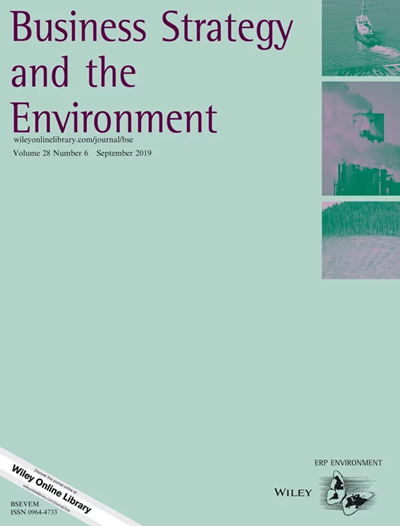纺织业中小企业的可持续决策:整合方法、实践和障碍
IF 12.5
1区 管理学
Q1 BUSINESS
引用次数: 0
摘要
尽管纺织业在经济上很重要,但它却是污染最严重的行业之一。本研究解决了理解纺织中小企业可持续决策的关键差距,其中决策过程通常是非正式的,缺乏结构化框架。它试图确定在生产环境中做出的决定,包括环境、经济和社会的可持续性,同时也探索那些忽视了这些方面。通过系统的文献综述,本研究探讨了关键主题,如:(1)中小企业可持续发展的决策;(二)纺织行业可持续供应链管理;(iii)实现可持续发展目标的可持续实践;(四)纺织中小企业的环境、社会和经济可持续性。分析(i)探讨了与产品、流程和组织相关的最常用的可持续性支柱和实践;(ii)对纺织中小企业面临的方面、战略、指标和障碍进行分类;(iii)确定可以引导这些公司走向可持续发展的决策类型、方法和标准。研究结果强调了环境维度的优势,其中生命周期评估、循环经济和可持续商业模式是最明确的实践。决策方法通常依赖于多属性决策(MADM),特别是层次分析法(AHP)。然而,数学规划模型的使用仍然有限。本文通过将分类要素与生产环境和可持续发展维度联系起来,为提高纺织中小企业的可持续发展举措提供了宝贵的资源。本文章由计算机程序翻译,如有差异,请以英文原文为准。
Sustainable Decision‐Making in SMEs of the Textile Industry: Integrating Methodologies, Practices, and Barriers
Despite its economic importance, the textile industry is one of the most polluting sectors. This study addresses the critical gap in understanding sustainable decision‐making in textile SMEs, where decision processes often remain informal and lack structured frameworks. It seeks to identify the decisions made in productive environments that incorporate environmental, economic, and social sustainability, while also exploring those that overlook these dimensions. Through a systematic literature review, the research examines key themes such as (i) decision‐making for sustainable development in SMEs; (ii) sustainable supply chain management in the textile industry; (iii) sustainable practices to achieve the SDGs; and (iv) environmental, social, and economic sustainability in textile SMEs. The analysis (i) explores the most commonly used sustainability pillars and practices related to products, processes, and organizations; (ii) categorizes aspects, strategies, indicators, and barriers faced by textile SMEs; and (iii) identifies types of decisions, methodologies, and criteria that can guide these companies toward sustainability. The findings highlight the predominance of the environmental dimension, with life cycle assessment, circular economy, and sustainable business models being the most well‐defined practices. Decision‐making methodologies often rely on multiattribute decision‐making (MADM), particularly the analytic hierarchy process (AHP). However, the use of mathematical programming models remains limited. This paper provides a valuable resource for improving sustainability initiatives in textile SMEs by connecting categorized elements with production environments and sustainability dimensions.
求助全文
通过发布文献求助,成功后即可免费获取论文全文。
去求助
来源期刊

Business Strategy and The Environment
Multiple-
CiteScore
22.50
自引率
19.40%
发文量
336
期刊介绍:
Business Strategy and the Environment (BSE) is a leading academic journal focused on business strategies for improving the natural environment. It publishes peer-reviewed research on various topics such as systems and standards, environmental performance, disclosure, eco-innovation, corporate environmental management tools, organizations and management, supply chains, circular economy, governance, green finance, industry sectors, and responses to climate change and other contemporary environmental issues. The journal aims to provide original contributions that enhance the understanding of sustainability in business. Its target audience includes academics, practitioners, business managers, and consultants. However, BSE does not accept papers on corporate social responsibility (CSR), as this topic is covered by its sibling journal Corporate Social Responsibility and Environmental Management. The journal is indexed in several databases and collections such as ABI/INFORM Collection, Agricultural & Environmental Science Database, BIOBASE, Emerald Management Reviews, GeoArchive, Environment Index, GEOBASE, INSPEC, Technology Collection, and Web of Science.
 求助内容:
求助内容: 应助结果提醒方式:
应助结果提醒方式:


